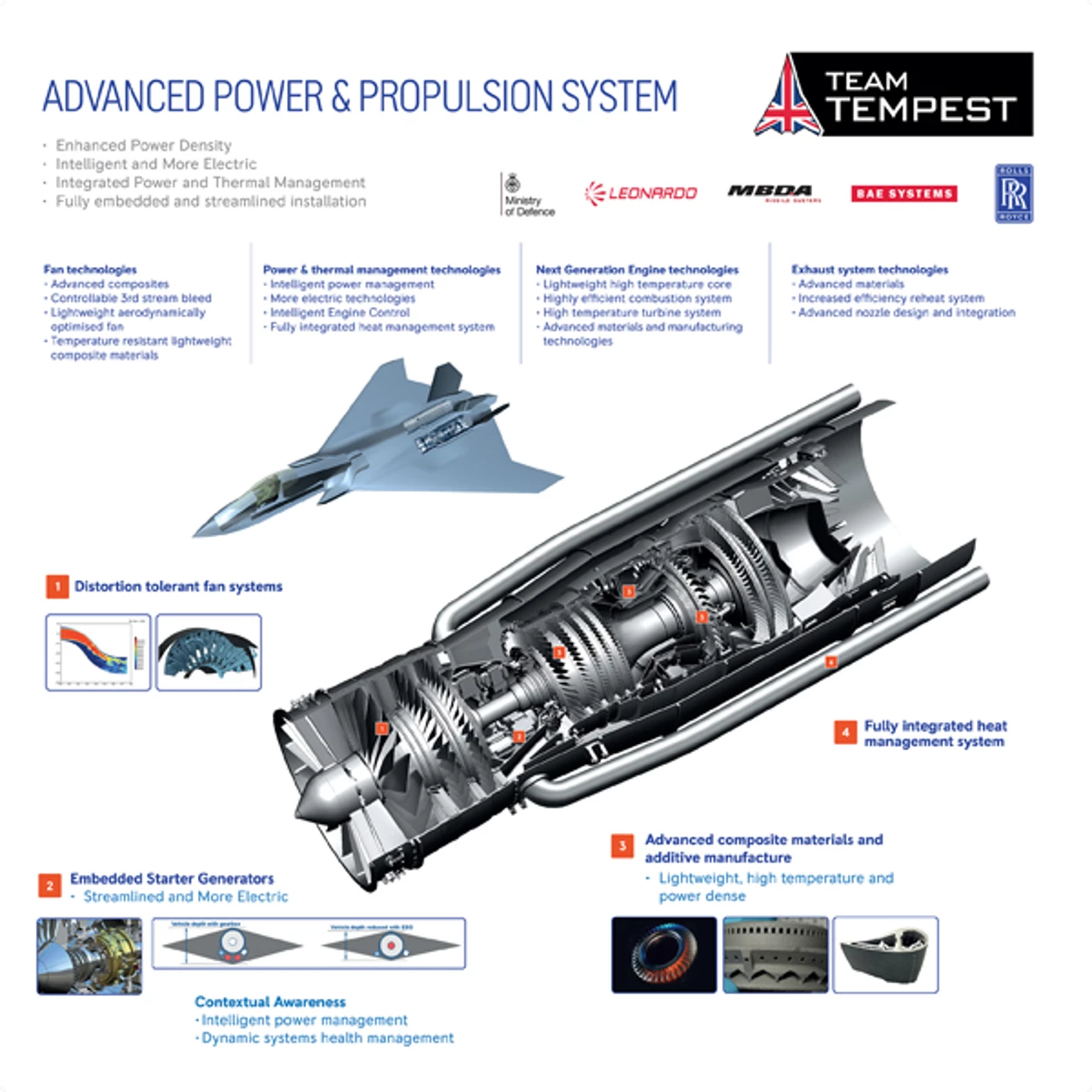Rolls-Royce has revealed the radical state-of-the-art jet engine that will power the UK's Tempest fighter plane when it enters service in 2035. Currently in its fifth year of development, the new engine will not only provide thrust for the supersonic warfighter but also unprecedented amounts of electricity to power future energy weapons and other systems.
Even though fifth-generation fighters like the Lockheed Martin F-35 Lightning II are just starting to be deployed in any great numbers, the major air forces of the world regard them as already obsolescent and are beginning to design and build the airplanes that will replace them. One of the front runners in the race is Britain's Tempest, which is being developed in partnership with Sweden and Italy.
As a sixth-generation fighter, the Tempest will, in many ways, be as big a leap over something like an F-18 Super Hornet as the Super Hornet is over a Second World War prop-driven fighter. Though designed to be fast and agile, the Tempest will also be designed for stealth and will be as much a command and control system and dynamic sensor platform as a fighter. In fact, with its artificial intelligence systems and deep learning, the pilot will act more as an executive officer than a dogfighter.
The problem is that the Tempest will be a very thirsty beast when it comes to electricity, producing unprecedented levels of power demand and thermal loads due to its carrying lasers and other energy weapons, advanced sensors and avionics, and swarming technologies. This means that the old engines that were made mainly to pump out thrust aren't up to the job.

This is why Rolls-Royce has been spending the last five years working on the next-generation engine for the next-generation fighter. At its core, it features an electrical starter-generator that was fully embedded in the core of a gas turbine engine that began life in 2014 as the Embedded Electrical Starter Generator (E2SG) demonstrator program, and takes a new approach to fighter design that places much more emphasis on providing electrical power in large quantities directly from the engine.
"The electrical embedded starter-generator will save space and provide the large amount of electrical power required by future fighters," says Conrad Banks, Chief Engineer for Future Programmes at Rolls-Royce. "Existing aircraft engines generate power through a gearbox underneath the engine, which drives a generator. In addition to adding moving parts and complexity, the space required outside the engine for the gearbox and generator makes the airframe larger, which is undesirable in a stealthy platform."
Instead of a generator, the new Rolls-Royce engine uses two electrical generators set on two spools that allow them to act as either motors or generators by transferring power from one to another. It's also hoped that this arrangement will make the engine more responsive and efficient.
In addition, the engine has a new energy storage system. There is also an intelligent power and engine control system to manage the power network by means of algorithms that make real-time decisions about how to handle energy demand as well as reduce thermal loads, which will prolong component life. This is aided by the fully integrated heat management system, and exhaust reheat system with improved efficiency, and a lighter, aerodynamically optimized fan that's made of temperature-resistant composites.
Now entering Phase two, the new power plant has been integrated into Britain's Tempest program. According to Rolls-Royce, its development is in response to the recognition that all future military vehicles will need much more electricity to complete their missions and is such a departure that it required the building of new testing facilities that allow gas turbines to be directly connected to a DC electrical network.
The company says that the third phase of the program will concentrate on thermal management and the addition of more electric engine accessories and will culminate with building a full-scale demonstrator engine, though when this will be completed has yet to be announced.
Source: Rolls-Royce






